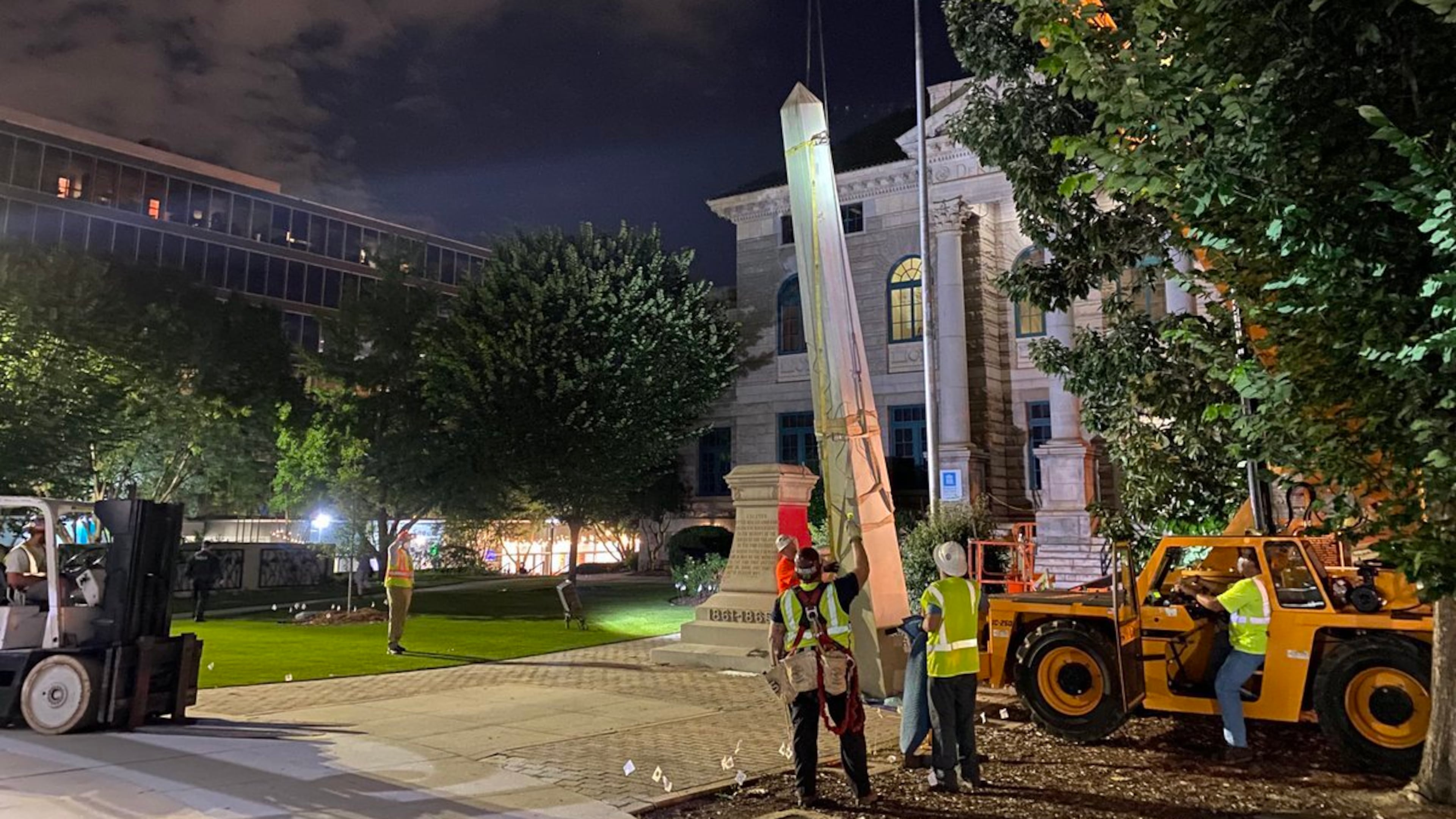Trump is going backward on Confederate monuments, but the South must move on

We need to pay close attention to what happens in the wake of Trump’s proclamation intended to restore “truth and sanity to American history” by removing any “improper, divisive, or anti-American ideology” from cultural institutions like the Smithsonian and its museums, even the National Zoo.
Trump is also changing the names of Southern Army bases back to their Confederate general names. He wants to impose an “alternative” account of our history that glosses over such unfortunate subjects as slavery, Jim Crow, lynching and the attempted genocide of Native Americans.
The proclamation also returns us to the highly divisive issue of Confederate monuments by requiring the “restoration of monuments,” presumably those honoring the Confederacy and its soldiers, which have been removed from public places.
There are approximately 1,500 such monuments and memorials in the South, according to a Southern Poverty Law Center report. So far there have been 60 removals, renaming, or relocation of Confederate memorials, some involving protests from white supremacy groups, such as the violent confrontation in Charlottesville over the removal of the statue of Robert E. Lee, to which Trump memorably commented: “You also had some very fine people on both sides.”
Black Americans have a legitimate reason for their opposition
Those who want the monuments to remain in place are primarily white Southerners who claim that the memorials honor their Southern heritage.

To remove them is to disrespect an important part of their cultural identity. Black Southerners, as one might expect, strongly object to the public presence of the monuments because they are painful reminders of the tragic African American heritage of slavery and oppression.
It will be very interesting and informative to see how many such monuments will be restored or removed. If they stay, they will continue to be painful for all African Americans as reminders of the racist cruelty they have endured from slavery to the present. White Christian. Nationalism is now part of the MAGA credo. African Americans have a legitimate reason for having the monuments removed from public view.
An alternative is to accompany the monuments with an explanation that situates them within an accurate historical context, beginning with their appearance in public spaces at the end of the 19th century, followed by installation on the squares of most Southern towns in the early 20th century, most of them sponsored by the Daughters of the Confederacy.
The ‘Lost Cause’ myth became truth for Confederacy apologists
The white Southerners who believe the monuments represent their Southern heritage tend to whitewash the fact that the Southern white heritage is very dark. It encompasses slavery, Jim Crow and public lynchings, not the stuff of a heritage worthy of pride and emulation.
The monument supporters can do so because they have absorbed the myth of the Lost Cause. Originating at the close of the 19th century, about the same time that these monuments began to appear in Southern towns and cities, the myth claims that even though the Confederate fighting man was far superior to his Union counterpart, the Confederates could not match the Union army’s overwhelming numbers in both men and equipment.
The myth also evokes an antebellum South as a plantation paradise, where the slave owners are benevolent and the slaves are happy with their lot, a much better one than the life they left behind in Africa; they also get to be Christian.
The romanticized atmosphere is one widely known as “moonlight and magnolias,” perhaps the best example of which is Margaret Mitchell’s iconic “Gone with the Wind.” The myth also asserts that the Civil War was not about slavery but about states’ rights and the fate of the Southern way of life.
It’s time for the South to repudiate its dark past
Clearly the removal of the monuments is necessary for the contemporary white South to be on the right side of history. Even with explanatory information nearby, the monuments would remain symbols of painful oppression to African Americans.
The exception is Stone Mountain, which wasn’t completed until 1972. Like it or not, the enormous bas-relief carving on the granite mountainside of a Confederate equestrian pantheon of Jefferson Davis, Robert E, Lee, and Stonewall Jackson, is an impressive achievement, and Stone Mountain Park provides an abundance of historically accurate supplementary information.
The monuments should be removed from public spaces and relocated to Confederate cemeteries, Civil War battlefields, museums or any other appropriate venue. Doing so would send a powerful message about the South’s repudiation of its dark past in favor of a sincere commitment to freedom, justice and equality for all. It would also be a necessary corrective of Trump and MAGA’s divisive attempt to rewrite American history in their favor.
Lucas Carpenter is Charles Howard Candler Professor of English, Emeritus, at Emory University, where he taught courses in Southern literature, culture, and history.


